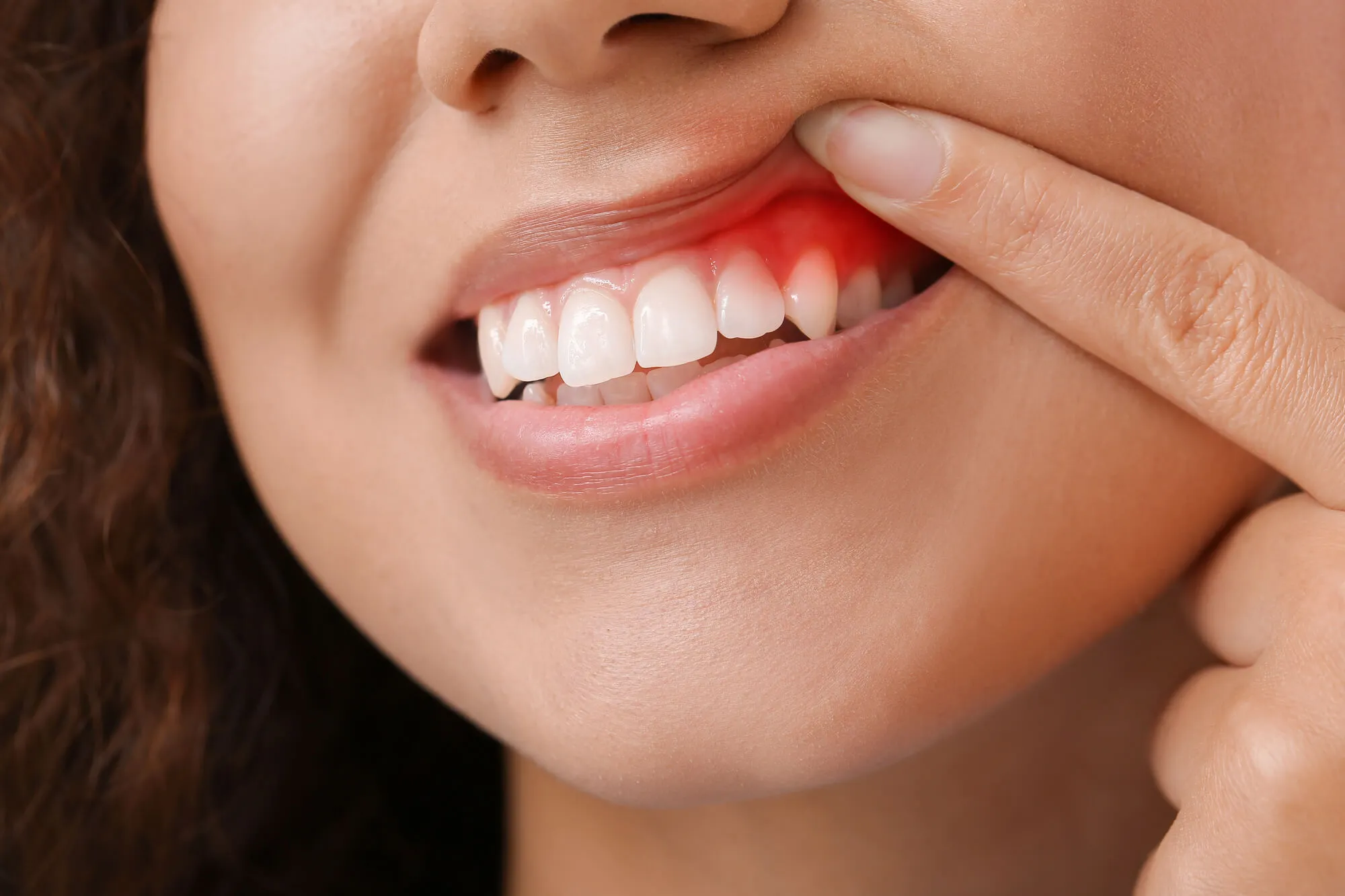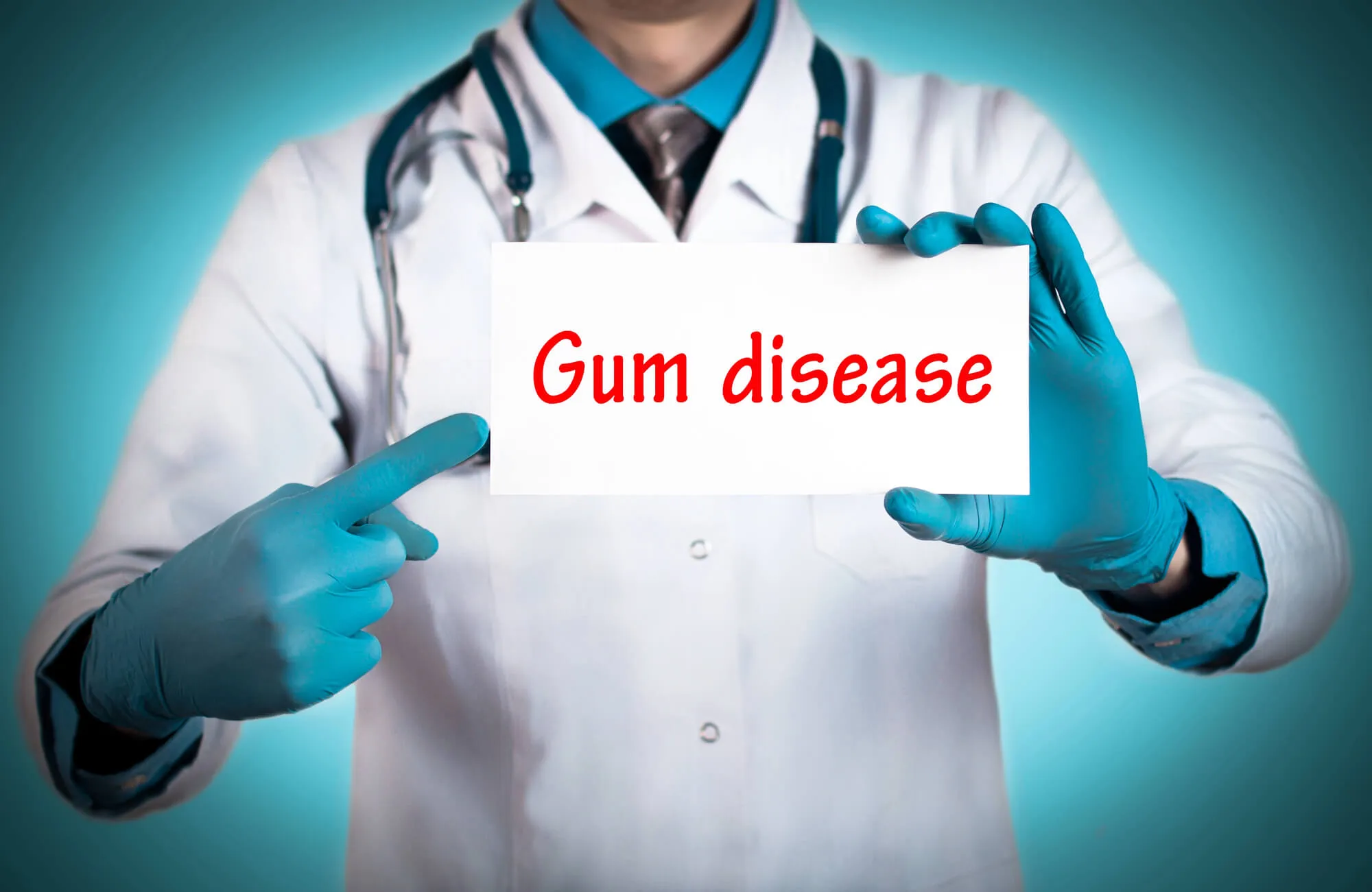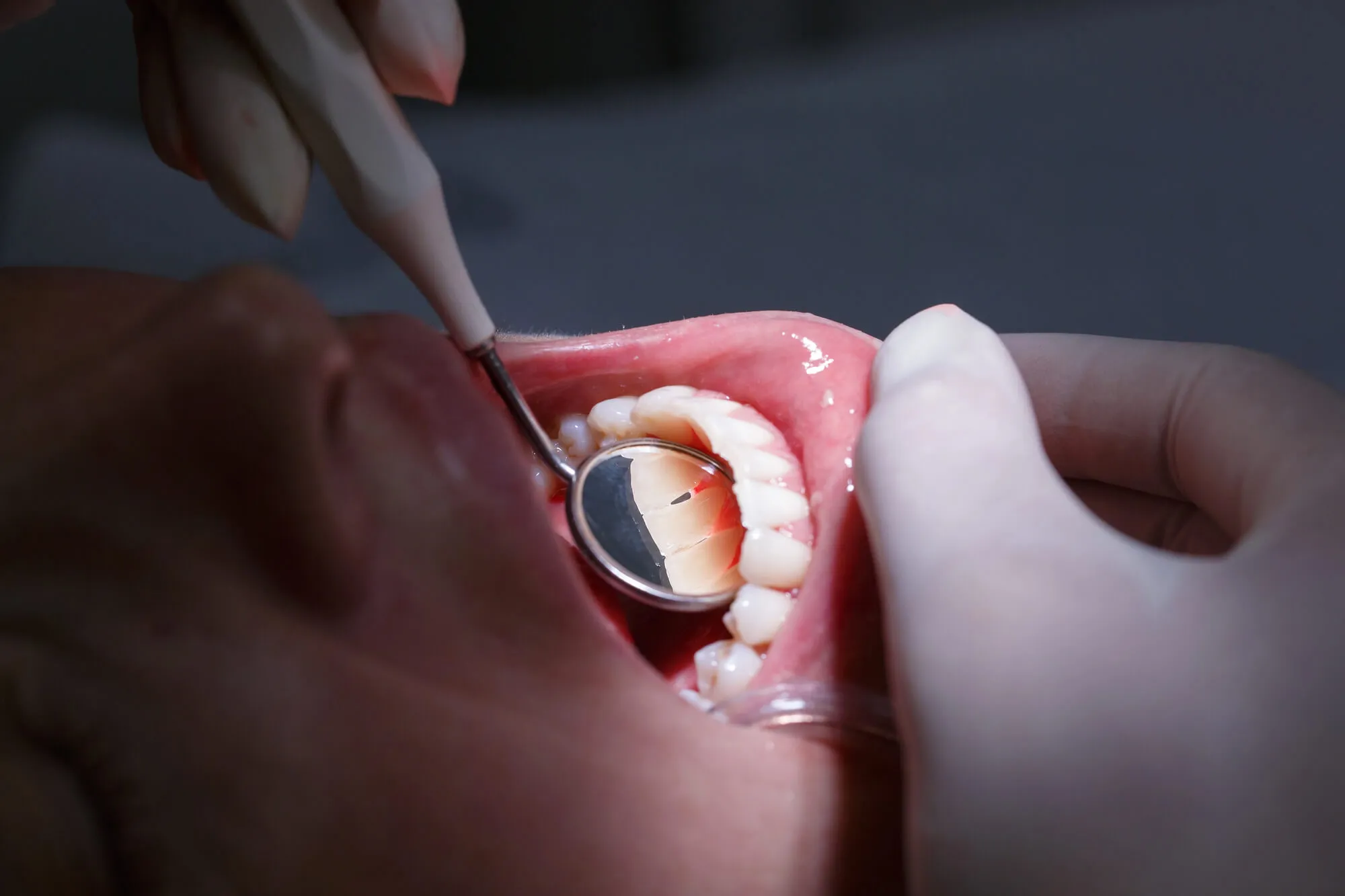
July 30, 2025
Gum disease often starts quietly, without pain, so it can be easy to miss. But over time, it can lead to swollen gums, bone loss, and even loose teeth. Many people only seek care once the damage becomes harder to reverse. If you're wondering whether something feels “off” with your gums, knowing the warning signs matters. By connecting with the best dentist in Murfreesboro, TN, you can get ahead of problems early and keep your smile strong.

Why Gum Health Matters
Gum tissue surrounds and supports your teeth. It helps hold everything in place and protects the underlying bone. When your gums are healthy, they fit snugly around each tooth and don’t bleed easily. But when bacteria build up near or below the gum line, it causes inflammation. Over time, that irritation can break down the tissue and bone that support your teeth.
Gum disease is progressive, but it’s also highly treatable in its early stages. According to the CDC, nearly half of adults over age 30 have some form of periodontal disease. That’s a staggering number and a reminder of how easily it can develop.
Recognizing the Early Signs of Gum Disease
Gum disease doesn’t always cause pain right away, which is why it often goes unnoticed until it becomes more advanced. Paying attention to subtle changes in your mouth can help you catch it early while it's still easy to manage.
- Bleeding Gums: If your gums bleed when brushing, flossing, or eating, don’t ignore it. Healthy gums don’t bleed easily, so even light bleeding may be an early sign of inflammation.
- Redness and Swelling: Gums should be pale pink and firm. If they appear red, swollen, or tender to the touch, it’s a sign that your body is reacting to plaque buildup.
- Persistent Bad Breath: Ongoing bad breath that doesn’t improve with brushing or rinsing may signal bacterial activity below the gumline.
- Gum Recession: Exposed roots or teeth that appear longer could mean the gums are pulling away.
- Loose or Shifting Teeth: As bone weakens, teeth may move or feel unstable—one of the more advanced signs of gum disease.
Understanding the Stages of Gum Disease
Gingivitis (Early Stage)
Gingivitis is the first stage of gum disease and the only one that affects just the soft tissue without damaging the underlying bone. It’s caused by the accumulation of plaque at the gumline, which triggers inflammation. You might notice red or swollen gums, bleeding when brushing or flossing, or a slight change in how your gums feel.
At this stage, the damage is still limited to the outermost layer of the gums. There's no bone involvement, and teeth remain stable. However, if left alone, gingivitis can progress quietly into more serious stages.
Early Periodontitis
In early periodontitis, the inflammation caused by plaque begins to reach below the gumline. The gums start pulling away from the teeth, forming small pockets that collect bacteria and debris. These pockets are difficult to clean with routine brushing, which allows bacteria to multiply.
You might start noticing a slight bad taste in your mouth, occasional gum tenderness, or mild bad breath. Bone loss begins at this stage, but it’s typically limited. Though symptoms may still be mild, the disease has moved beyond the surface and now affects the structures supporting your teeth.
Moderate Periodontitis
This stage involves deeper pocket formation and further tissue and bone damage around the teeth. The gums may recede more noticeably, and teeth might begin to loosen slightly or feel different when chewing. Inflammation becomes more pronounced, and the risk of permanent damage increases.
Bacteria penetrate deeper into the gum tissue, increasing the chances of infection and destruction of connective fibers. You may notice more frequent bleeding, gum sensitivity, or even a visible change in how your teeth sit or feel in your bite. This stage often requires more focused care to prevent further progression.
Advanced Periodontitis
Advanced periodontitis is the most severe stage. Deep pockets around the teeth become infected, and the bacteria may destroy large portions of the bone that anchor teeth in place. Teeth may shift, loosen, or fall out entirely. Abscesses—painful pockets of pus—can develop along the gums, causing swelling, pain, and difficulty chewing.
At this point, gum tissue may appear visibly damaged, and tooth mobility is often obvious. In severe cases, the infection can spread beyond the mouth and impact overall health. This stage reflects extensive breakdown of the supporting structures and typically causes lasting damage to the smile.
Who Is at Risk?
Certain habits, health conditions, and life stages can increase your risk of developing gum disease.
- Poor Oral Hygiene: Inconsistent brushing and flossing allow plaque to accumulate, which irritates the gums and eventually causes inflammation and infection.
- Smoking or Tobacco Use: Tobacco reduces blood flow to gum tissue, making it harder for your body to fight off bacteria. It also masks common symptoms, like bleeding gums.
- Hormonal Changes: Pregnancy, puberty, menopause, and monthly cycles can all increase gum sensitivity. Hormonal fluctuations make gums more reactive to plaque buildup.
- Diabetes: People with diabetes are more susceptible to infection, including in the gums. Poorly managed blood sugar can make gum disease more difficult to control.
- Dry Mouth: Saliva plays a key role in washing away bacteria. A lack of saliva—caused by medications, aging, or illness—creates an environment where harmful bacteria can thrive, increasing the risk of gum disease.

How Gum Disease Affects Your Overall Health
Gum disease doesn’t just affect your mouth; it can also impact the rest of your body. Chronic inflammation caused by gum infection allows bacteria to enter the bloodstream and spread. Over time, this may contribute to several systemic health issues:
- Heart Disease: Bacteria from gum infection can travel to the arteries, increasing inflammation and the risk of heart attack or stroke.
- Poor Diabetes Control: Gum disease makes it harder to regulate blood sugar levels. Uncontrolled inflammation can worsen insulin resistance.
- Pregnancy Complications: Expectant mothers with gum disease may be more likely to experience preterm birth or deliver babies with low birth weight.
- Respiratory Infections: Inhaling bacteria from infected gums may worsen lung conditions or lead to infections like pneumonia, especially in older adults.
Keeping your gums healthy is an important part of keeping your whole body healthy, too.
How Gum Disease Is Diagnosed
A gum disease diagnosis is based on a combination of visual signs, measurements, and digital imaging. During a routine exam, your dental team checks for the following:
- Pocket Depth: Your dentist measures the space between your teeth and gums using a small periodontal probe. Deeper pockets may indicate gum detachment and bone loss.
- Gum Bleeding and Inflammation: Bleeding during brushing, flossing, or probing is one of the earliest indicators of gum disease. Redness and swelling are also key warning signs.
- Tartar and Plaque Buildup: Hardened deposits along the gumline are signs of poor oral hygiene and contribute to gum irritation.
- X-rays for Bone Loss: Digital X-rays help assess the condition of the bone that supports your teeth. Any loss suggests gum disease has progressed beyond the early stage.
Regular exams help your dentist monitor these indicators and intervene early if needed.
Treatment Options for Gum Disease
Professional Dental Cleanings
Routine cleanings remove plaque and tartar from above the gumline, especially in areas where brushing and flossing may be missed. These surface-level cleanings help prevent gingivitis from progressing and keep your gums healthier between visits. They're essential to maintaining oral hygiene and monitoring early signs of gum disease.
Scaling and Root Planing
This non-surgical deep cleaning targets bacteria beneath the gums. Your dentist or hygienist uses special tools to remove hardened plaque from pockets around the teeth and smooth the root surfaces. Smoother roots help the gums reattach more easily, reducing inflammation and stopping further damage to gum and bone tissue.
Antibacterial Rinses or Medication
Your dentist may recommend a medicated mouthwash or apply antibiotics directly into gum pockets to reduce bacteria and inflammation. These treatments work alongside cleanings to fight infection, control gum swelling, and promote healing. They're especially helpful in cases where deeper areas are difficult to clean thoroughly with tools alone.
Periodontal Maintenance
After treatment, patients usually shift to more frequent cleanings every 3–4 months. This helps control bacteria and gives your dentist a chance to monitor progress.
Gum disease doesn’t just go away—it requires consistent follow-up. Patients with a history of gum disease benefit from periodontal maintenance cleanings every 3–4 months instead of the typical 6-month schedule. These visits aren’t just about cleaning; they allow your dentist to measure pocket depth, monitor healing, and catch any flare-ups early. Think of these appointments as preventive tune-ups. They help protect your progress and reduce the chances of the disease returning.
At-Home Habits That Support Gum Health
What you do at home makes a big difference. These simple habits can support your treatment and help prevent future gum issues:
- Brush twice a day with a soft-bristled toothbrush
- Floss daily to remove plaque from between teeth and under the gumline
- Use a dentist-approved mouthwash if recommended
- Quit smoking or using tobacco products
- Eat a balanced diet rich in vitamin C, calcium, and antioxidants
- Stay hydrated to support healthy saliva flow
Consistency is key. Gum disease doesn’t develop overnight and won’t disappear overnight either, but healthy habits make a lasting difference.
Even with professional care, your daily habits are what truly keep gum disease in check. Electric toothbrushes can be more effective at removing plaque, especially for those with limited dexterity. Interdental brushes and water flossers are also great alternatives if traditional flossing is a struggle.
If you’re prone to dry mouth, sipping water throughout the day and chewing sugar-free gum can help stimulate saliva—your mouth’s natural defense system.

Prioritize Your Gum Health by Seeing the Best Dentist in Murfreesboro, TN
If you're noticing bleeding gums, soreness, or other signs of infection, don’t wait. Our team at Stonetrace Family Dental provides expert care in diagnosing and treating gum disease with compassion and clarity. We’re here to help you protect your oral and overall health with personalized treatment and ongoing support. Schedule your appointment today!












.png)